
Lawn Care SEO: How to Generate Leads and Landscaping Clients Fast
As a lawn care and landscaping specialist, your work makes homes more beautiful…..
Digital Marketing can be one of the most profitable and cost effective ways to promote your business. One of the best methods of Digital Marketing is SEO or Search Engine Optimization. SEO can help not only bring traffic to your site, but also trust and brand recognition to your business. SEO takes time to build but as your traffic grows your marketing budget remains the same. That is why it has become such a great solution for businesses of all sizes.
Hiring an SEO company does not guarantee results and some can potentially hurt your site if they don’t know what they are doing. That’s why you want to ensure you have a solid budget and chose a company that has your best interest in mind.
Lower cost SEO can hurt your website if you take shortcuts. The best approach is to look at the lifetime value of each customer and how many potential clients you need each month to determine your monthly budget.
Remember that SEO builds equity into your website and business and creates a sellable asset should you ever want to sell the business. If you don’t know where to start or you have questions, Book a Free Consultation with Scott Keever with Scott today.
The truth is that none of the strategies to make money from your products or services is going to work if you don’t have a consistent flow of people coming to your site.
Generating web traffic is the number #1 pursuit of every business.
That’s why the first step in acquiring customers and growing your revenue is attracting leads. That’s where search engine optimization (SEO) comes in.
SEO can be a scary thing for a small business. You always have to compete with the big guys. Not to mention you have to squeeze your whole SEO strategy on a limited budget.
SEO stands for “search engine optimization.” It’s the process of getting traffic from the “free,” “organic,” “editorial,” or “natural” search results on search engines.
All major search engines such as Google, Bing, and Yahoo have primary search results, where web pages and other content such as videos or local listings are shown and ranked based on what the search engine considers most relevant to users.
Website owners don’t have to pay money to get ranked in the organic search results, unlike with paid search ads. If you play your cards right, you’ll be able to generate organic traffic, leads, and sales, ultimately growing your revenue. Whether you have a $100 marketing budget or $10,000, there are SEO opportunities you can tap into.
If you’re already working with an SEO agency or considering it, check out our Client Referral Program, where you can earn rewards by referring others to Keever SEO.
Before we get into these opportunities, let’s briefly discuss how search engines work in real-time.
Search engines are sophisticated machines but the roles they play on the web are enormous. They help online users find information online. Search engines use spiders to crawl the entire web looking for new websites and web pages to index.
To help you understand it better, take a look at the roadmap.
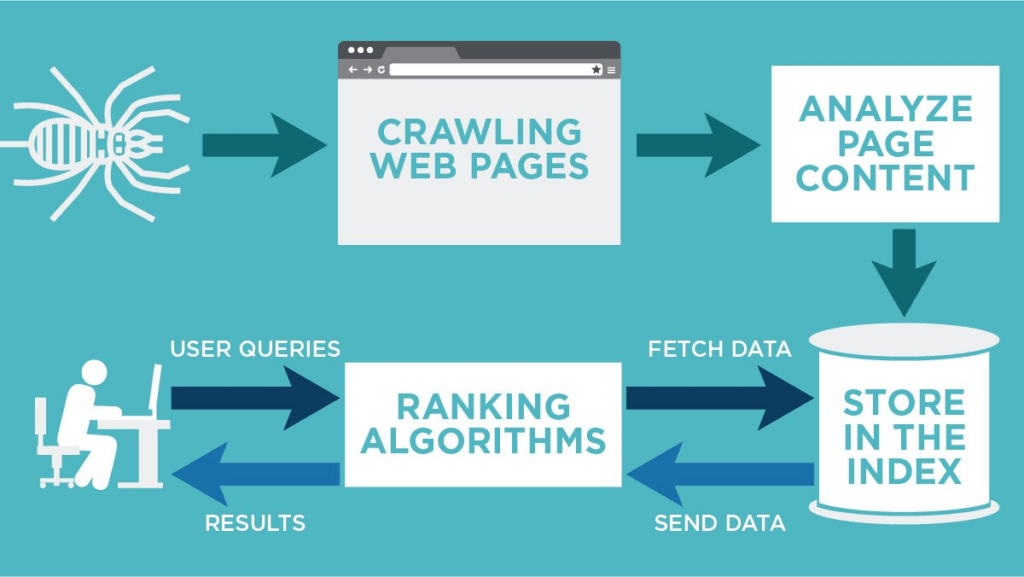
Search engines have 3 primary functions:
You have a limited budget, and you don’t benefit from brand recognition. Nevertheless, countless startups break through crowded markets. How do they do it with so few marketing dollars?
How can you?
Below are tips on how to get results from SEO on your budget:
Local SEO optimization is a must. Local SEO has received so much attention lately, and that’s because it’s a good way to grow your company, especially if you have a limited budget.
Think locally and maybe when you’ve got some experience you’ll start acting globally.
If you’re serving local consumers, there’s no need targeting the whole world when your audience is in your city, state, or country. I can guarantee that your local consumers and clients are using Google right now.
According to research, “46% of all searches on Google are searching for local information. 97% of search users searched online to find a local business.”
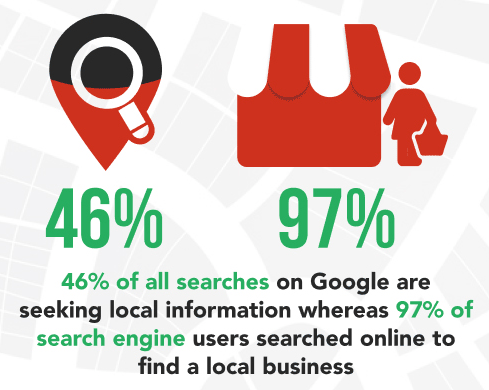
Start small, think big and then work your way up on a small budget. If you offer a local service, then you need to focus your energy and money into ranking in the first positions.
One way to improve your business’s local SEO is by optimizing its Google My Business page, formerly known as Google Places and sometimes called a Google Map listing.

If you’re a plumber, for example, some of the local keywords you can target to increase your chances of ranking on Google Map packs are:
Your customers want answers to their questions, and they want to find the best information as quickly as possible. This is why your business needs to focus on user intent when building your SEO strategy.
Even though long-tail keywords will have much lower traffic compared to generic or broad keyword terms, if you’re working on a small SEO budget, then you need to focus on user intent and conversions.
However, RavenTools did a study and found that 70% of the search traffic long-tail keywords with 4-6 words.

One aspect of this type of strategy for a business with a limited SEO budget is to use long-tail keywords instead of general keywords.
Long-tail keywords are key phrases that are very specific to the needs of your customers. These types of phrases are longer and more accurate than their more commonly searched variations.
Here’s a quick contrast between broad keywords and long-tail keywords:
Broad keywords:
Long-tail keywords:
Unlike standard keywords, long-tail keywords offer your SEO strategy several benefits, including:
Due to their specificity, long-tail keywords are highly focused and relevant to online searches. More importantly, they drive the best conversions for businesses because they’re well-defined search terms.
Long-tail keywords drive higher conversions because they deliver highly-qualified traffic and leads through online searches.
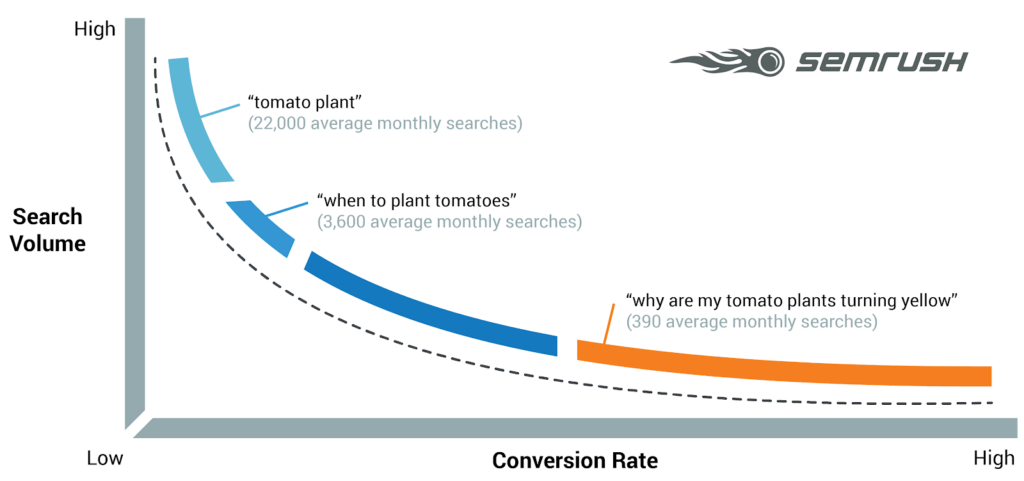
How does social media impact your SEO efforts when you’re on a tight budget? Do retweets, shares, and likes to a page increase that page in the organic search results?
Several studies have shown a correlation between social media shares and higher rankings.
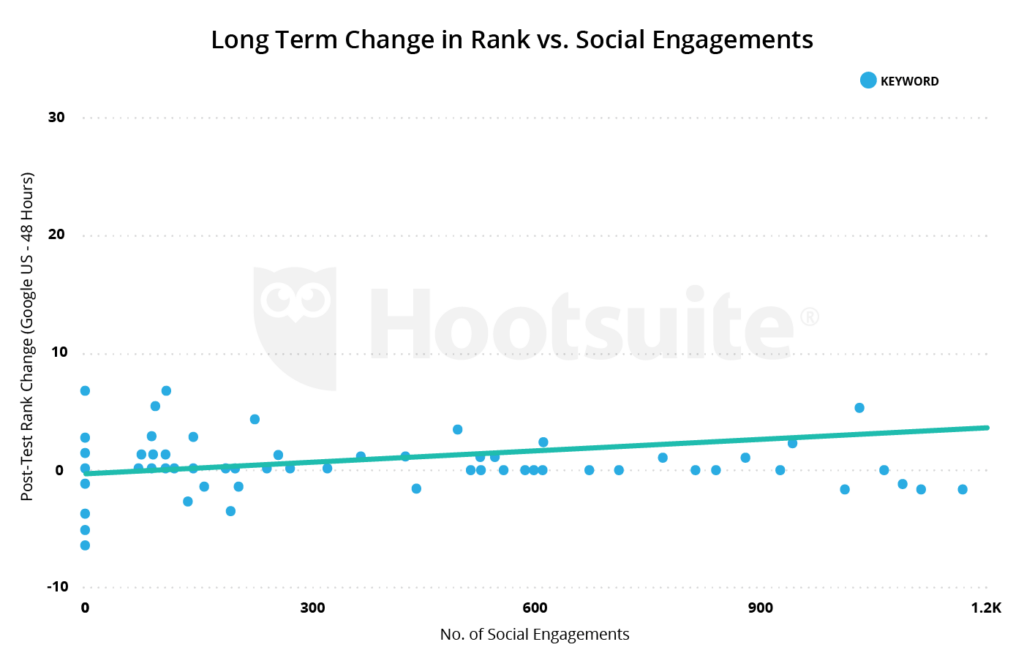
I have noticed this myself: content that often ranks well on Google generated a lot of shares, retweets, and likes.
In other words, if you publish new content on your blog and several people share it on Facebook, tweets it, or amplifies its reach on social media channels, Google will receive a signal that the page is valuable.
Sooner or later, the page will be pushed to the top of the organic search results where more search users can find it.
It’s possible that you don’t know about the more technical aspects of SEO, but certainly, you can communicate better in other ways.
Communicating via various social media channels won’t just help you gain those online customers you interact with, it can also help with your SEO.
By tweeting links to your pages (where appropriate ), you can encourage people to share and discuss your online content.
Blogging is the other side of the content marketing coin. It’s fine to share others’ content, but creating your own accomplishes two purposes:
How you go about adding a blog to your website will depend on how it’s built. If you’re running a self-hosted WordPress site, your theme may already include blog functionality. You’ll merely need to make that section live.
Blogging has both direct and indirect SEO benefits. What we’re most concerned about is the direct benefits, considering you have a limited budget.
When you develop a blog and update it consistently with helpful content, you’ll increase your chances of ranking for a wider range of search queries. In turn, this increases your online visibility, as well.

For example, if a potential customer searches “How does a medical practice work,” the search results are mainly going to generate blog posts results.
The good thing about blogging is how much impact it has on SEO. The majority of search results are from blogs in the industry, so you need to tap into this quickly.
If your business isn’t blogging, you’re leaving a lot of potential visitors and leads on the table.
Jayson DeMers, a content marketing expert shared some tips on the impact blogging can have on a website and covered these specific points:
In terms of search engine rankings, I like to think of blogging as fishing. The more hooks you have in the water, the more likely you are to catch a fish. In the same way, as you add more content to your site, more pages from your domain become indexed in search engines. This improves organic search visibility and increases website traffic.
Julia McCoy generated 90,000 visitors per month to her blog and ranked for 21,600 keywords by blogging consistently.
In the exact words of to Julia:
The amount of content we publish on our blog, the consistency of it, and the quality and relevancy of our blog posts are the biggest factors behind what is now 90,000+ visitors/month coming to our site.
If your goal is to rank for certain keywords, such as “best CRM tools online”, you can get better results in the search engine if you focus a blog around that topic.
When people are searching for that search term, what they’re looking for is information that will help them understand CRM tools, since the majority of them aren’t experts but beginners.
Consistency is key when it comes to blogging. Tresnic Media focused on publishing useful content on its blog for 5 weeks nonstop and recorded a 431% increase in website traffic.

Considering that this is still a short amount of time to see results, imagine how much results you’ll get in 6 months or 12 months.
Through blogging, you publish helpful and relevant content that will attract search users, then converting them into leads by offering valuable material such as free whitepaper on customer relationship management or free tool for gauging a customer’s interest.
Search engines want a website to be credible and trustworthy. They want to offer reliable information to website visitors, and one of the ways they’re able to measure this is by seeing how many indexed pages a website has.
Generally, having a larger website correlates with being a better source for information. But search engines recognize that this doesn’t always hold, which is why smaller sites are still able to outrank larger ones, sometimes.
But if your company has a consistent blogging strategy, then you can work to index more pages over time.
According to HubSpot, “companies that blog consistently have 434% more indexed pages than companies that only blogs when they feel like or ignore blogging altogether.”
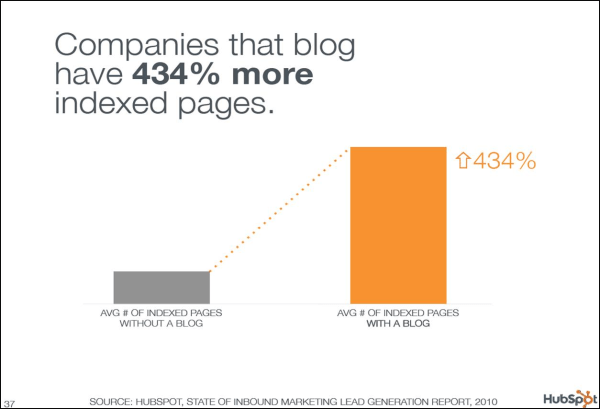
Home Depot is a good example of a company that blogs consistently. Even though the company is eCommerce-based, they still manage to publish useful and evergreen content.
Interestingly, if you Google ‘Home Depot’, you’ll notice that over 324,000,000 indexed results. When you compare that to Dykes Lumber, a lumber company in the Greater NYC area, you’ll also notice they have fewer indexed pages on Google.
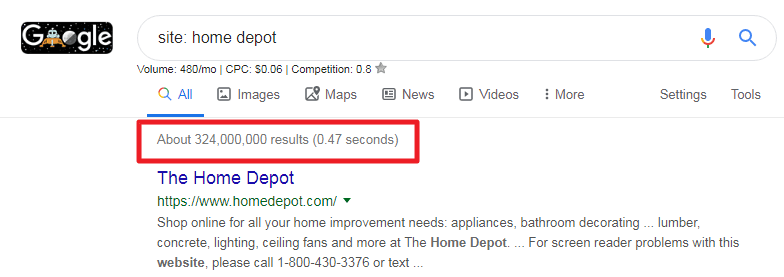
Inbound links are the types of links that point to your web page from another blog. For example, if Forbes links to your website, that’s an inbound link. On the other hand, if you link out to Forbes, that’s an outbound link.
Inbound links are powerful signals that Google count as votes from other sites. It’s an indication that your page is useful and deserves to rank better in the search results.
There are several ways to get quality links, but one example is to create useful content on a popular topic that your audience knows about, and then find similar topics that have been shared by so many people.
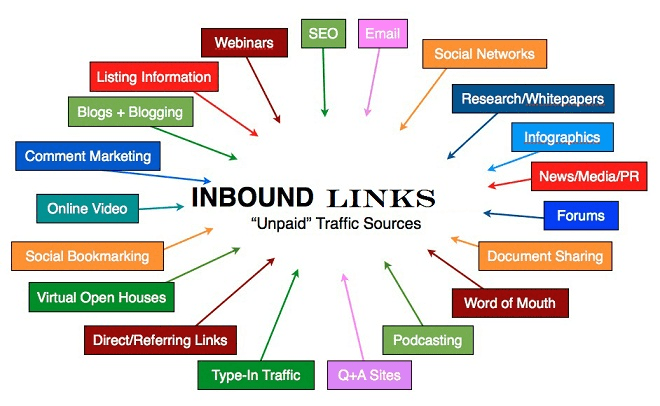
Next, reach out to the websites that linked to the content and ask for links.
Blogging can earn you more inbound links. According to HubSpot’s research, companies that blog consistency earn 97% more inbound links than companies that don’t.
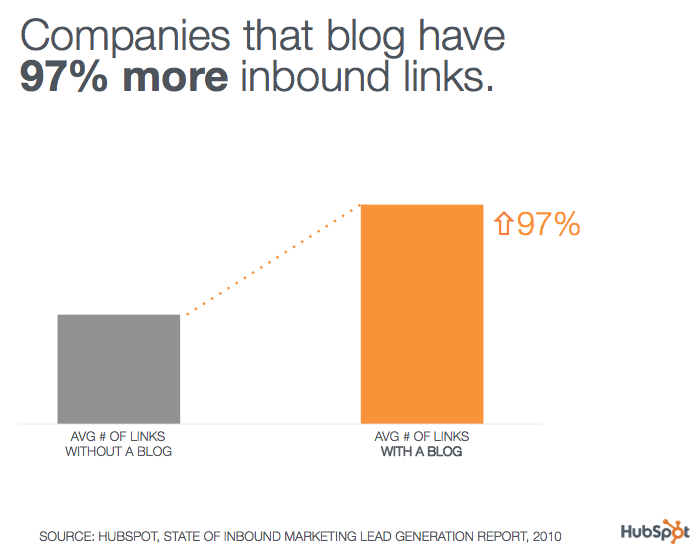
Although reaching out to people to link back to your blog post is effective, but it’s time-consuming, and requires multiple back and forth emails/follow-up.
If you can spend more time researching great topics and creating the best resource out there, I can guarantee you that other marketers and websites will naturally link back to you.
The essence of internal linking is to improve website navigation and user experience. It’s also pivotal when you’re looking to establish hierarchy and spread link juice across your website.
According to Search Engine Land, you can boost your search rankings with internal links only.

Without blogging, it’s almost impossible to internally-link your web pages. Even though it’s doable, but you’ll have to do it manually.
If your blog is hosted on WordPress.org, which means it’s a self-hosted blog, then you can install a relevant internal linking plugin to simplify the entire process.
Most businesses struggle to link internally to their pages because they don’t even have many published posts.
But as time goes by, it’s quite easy. By designing an internal linking strategy, companies like Amazon, WebMD, Wikipedia, and Forbes have been able to dominate the search results in their respective industries.
WebMD ranks for the competitive keyword “cancer symptom” with well over 5 million monthly search volumes. This is partly the result of internal links on the page.
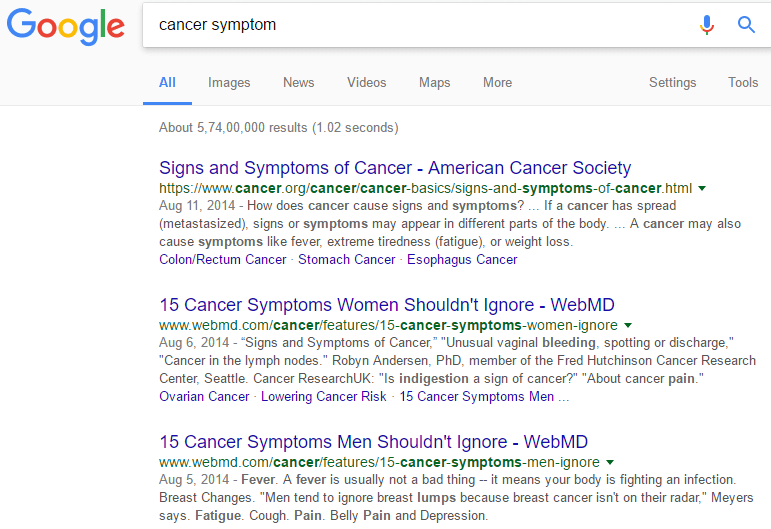
With thousands of pages, it’d have been difficult to navigate these sites, but by linking to their closely-tied pages, products, and resources, users can navigate these gigantic websites and find the information they need on time.
Once you’ve identified the best long-tail keywords to target, start incorporating them to your web pages. Naturally incorporate the primary keyword in your page titles, URLs, and body.

However, it’s important not to overdo it when incorporating keywords into the content.
Try to use the keywords in one of the page’s headers and within the first paragraph of the content. That should be enough!
This should be enough to get Google’s attention without going overboard.
You can also create new content around your long-tail keywords. Whether a static page or an article/blog post, having a specific page for your long-tail keywords will increase the likelihood they will rank well organically.
For example, when you search for “Watercraft rentals”, you’ll notice that the top results are specifically targeting the keywords in their page titles. Take a look:
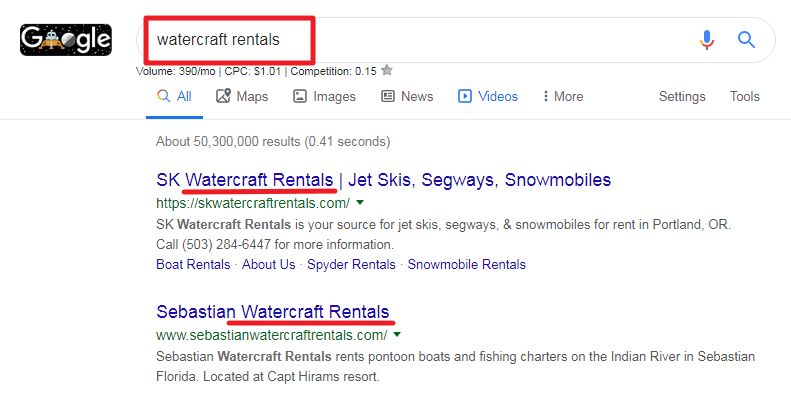
Another good idea to work on a small SEO budget is to look for content gaps which your competitors have neglected or haven’t covered extensively on.
Start by analyzing your competitor’s social media activity to get an idea of their social media strategy.
But don’t stop there, read their blogs, see what they’re missing, read the comments and find out what other people’s needs are, and start making fresh new content or improve the one you already have.
To simplify the entire process, you can use Ahrefs to find these content gaps.
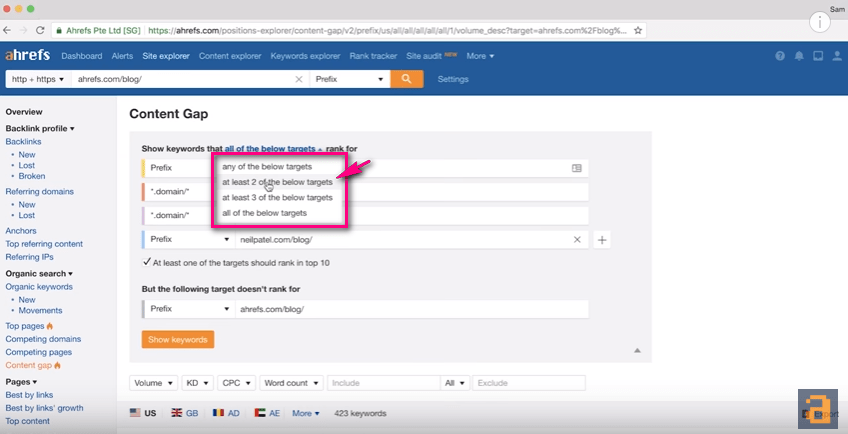
By following these tips, you can improve your website’s organic search visibility and drive more traffic to your website. Check our website for a Scott Keever SEO location near you.
CEO, Keever SEO

As a lawn care and landscaping specialist, your work makes homes more beautiful…..

The Step-By-Step Guide To Real Estate SEO By KeeverSEO Team3 August 2023 . 2 min read Share this post Request

Insurance website SEO can be tricky.
But don’t worry. I’ll show you EXACTLY how…
©2025 Keever SEO. All rights reserved.